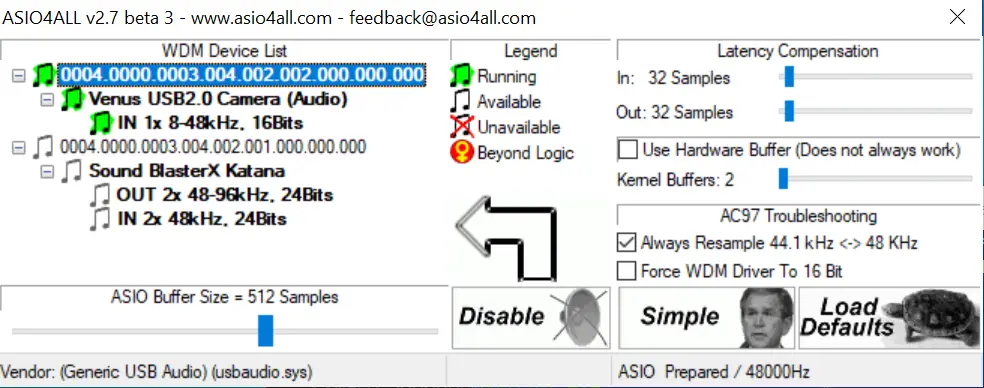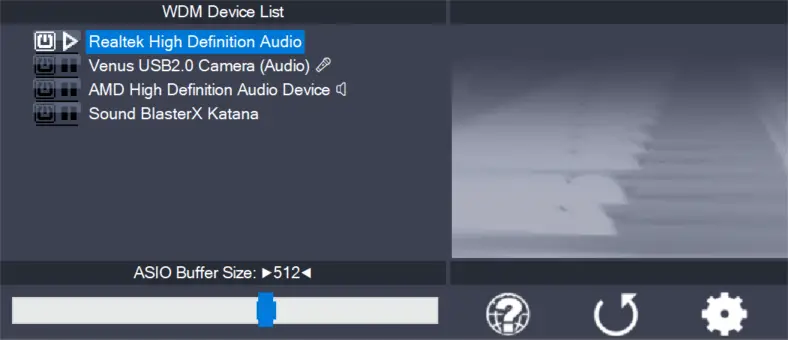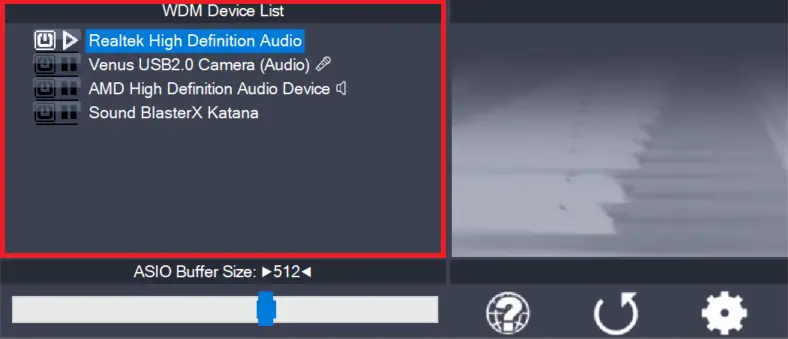Changes since version 2.7 beta 2:
- Add intersection checking. Thanks to Eugene Muzychenko once again for having me have another look into this and figuring out how it _might_ work. As a matter of fact, it seems to completely work now, but I’m still puzzled why it works the way it works and not the way it _should_ have worked to begin with – probably one of the mysteries within the Microsoft(r) Universe(tm). What this means to you as the user is that this just _might_ magically resolve a number of issues with sound cards that employ “jack sharing” and stuff like that. In fact, it just _might_ resolve some more issues with other devices as well.
- Fix: ReWuschel now also works with ASIO buffer sizes that are not a multiple of 64 samples. This sometimes was mis-perceived as having to up the buffer size if using ReWuschel when normally you should not have to. Also, the manual has been updated with some information on using ReWuschel.
- Add dynamic buffer strategy switching. This is experimental and mainly meant to just _maybe_ prevent one or the other occasional crackle from occurring. Even if you don’t notice a difference, trust me: in _theory_, it absolutely makes sense!






Leave a Reply